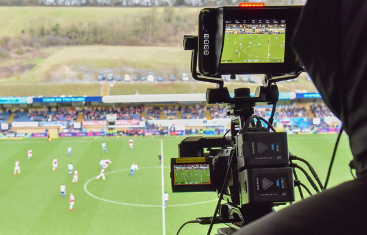
The world of sports broadcasting is undergoing a rapid transformation, and Major League Baseball (MLB) is no exception. As 2025 approaches, the way fans experience MLB games is set to become more dynamic, interactive, and personalized. With new technologies and broadcasting deals reshaping the landscape, here’s what every baseball fan should know about the future of MLB broadcast .
The Rise of Streaming Platforms
One of the most significant shifts in MLB broadcast (MLB중계) is the move towards streaming platforms. Traditional cable TV is no longer the dominant method for consuming baseball games. By 2025, streaming services like MLB.TV, ESPN+, and new entrants in the market are expected to capture an even larger share of viewership.
This shift brings greater flexibility for fans, who can now watch games on-demand and on a variety of devices, whether it’s a smart TV, tablet, or smartphone. Additionally, streaming platforms are working to lower latency, ensuring fans watch games in near real-time without the delays that often plagued earlier online broadcasts.
Personalized Viewing Experiences
MLB broadcasts are not just about watching a game; they’re becoming an immersive experience tailored to individual fans. By leveraging advancements in artificial intelligence and big data, broadcasters are now able to provide personalized content. Expect custom overlays that highlight your favorite team’s stats, player-specific feeds, and even the ability to toggle between different broadcast angles during a live game.
Interactive features will also be a big draw, with options such as live polls, trivia, and integrated fantasy baseball updates appearing on-screen in real-time. These innovations promise to keep viewers more engaged throughout the game.
Enhanced AI-Powered Commentary
2025 also marks a turning point for sports commentary. Baseball aficionados can look forward to AI-powered insights complementing human broadcasters. Through machine learning technology, AI systems analyze game data in real-time, providing unparalleled insights into player performance, strategy, and even predictive outcomes.
For instance, during a game, an AI system might predict the likelihood of a pitcher achieving a strikeout based on pitch history and batter performance. These data-driven breakdowns will elevate game analysis and add another layer to the viewing experience.
Broader Accessibility
Another crucial change in MLB broadcasts is the industry’s commitment to accessibility. By 2025, most MLB games will offer closed captioning in multiple languages, ensuring greater inclusivity for international and hearing-impaired audiences. Audio descriptions for visually impaired fans and region-specific streaming packages tailored to different time zones are additional measures broadcasters are adopting to bring more fans into the fold.
Final Thoughts
The MLB broadcasting landscape in 2025 is all about enhancing fan engagement, accessibility, and interactivity. With streaming services leading the way, personalized experiences and AI-guided analysis will become staples of every game. These advancements ensure that baseball remains not only a timeless pastime but also one of the most innovative sports to watch. Fans are in for a treat as technology continues to redefine how we enjoy America’s favorite game.